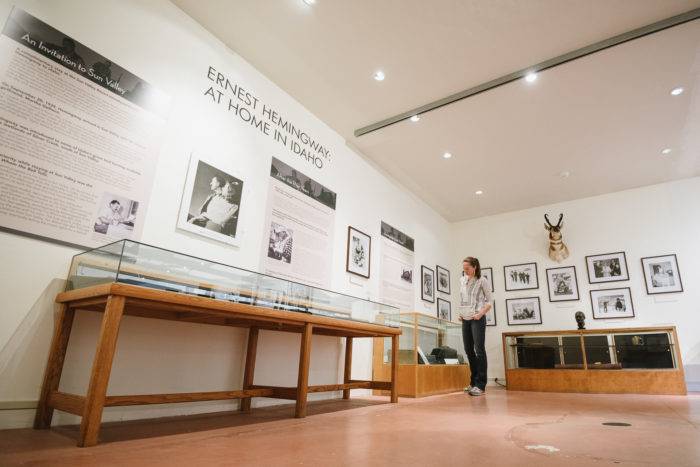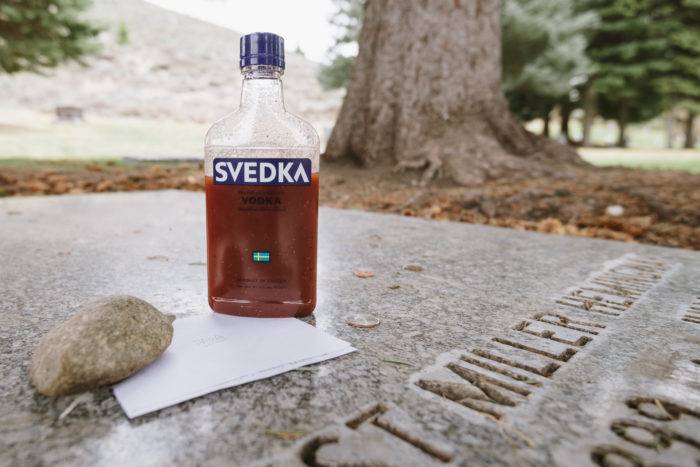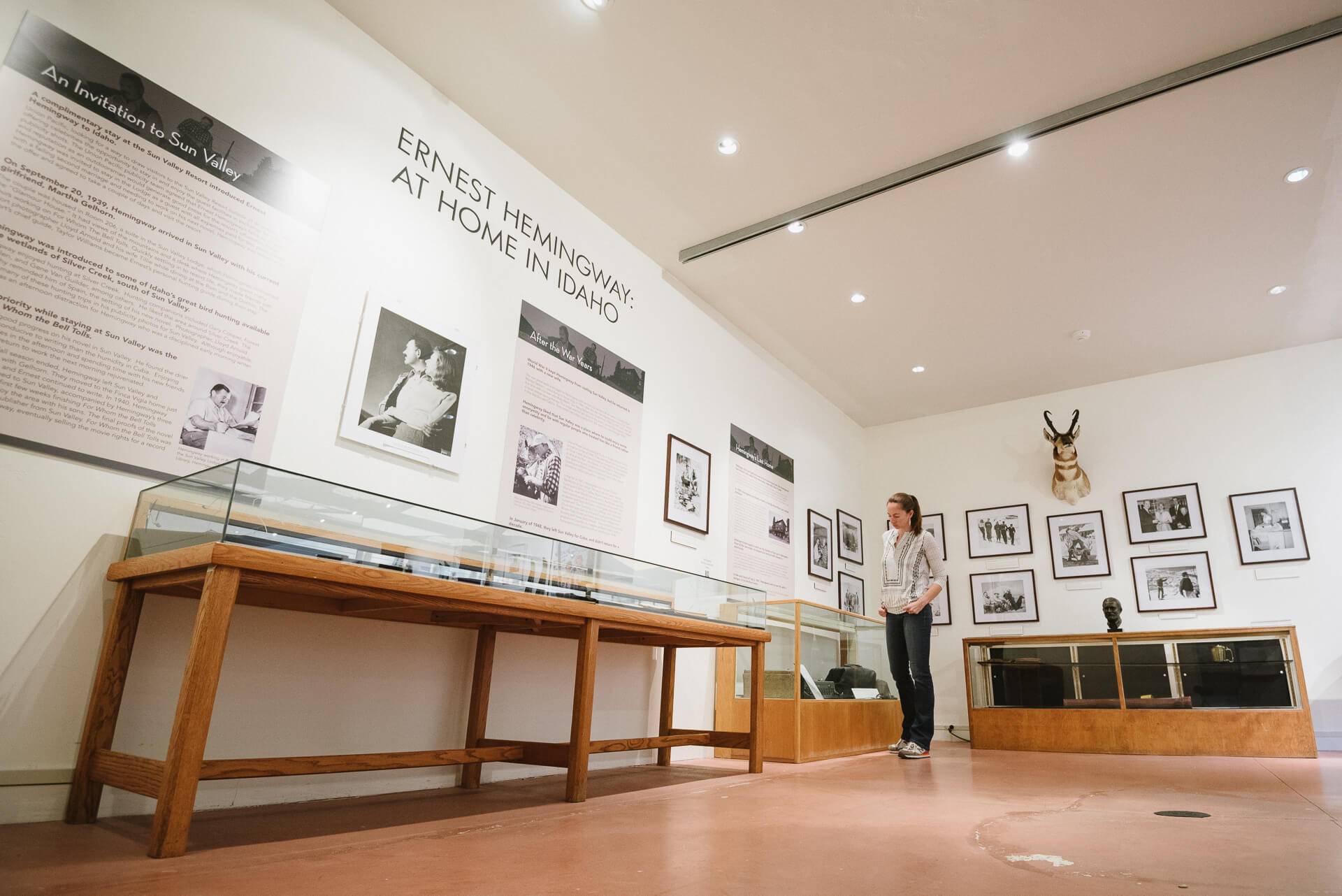Ernest Hemingway looms large in the small mountain town of Sun Valley, Idaho. Hemingway was lured to Sun Valley for the first time in 1939 by the publicists of the Union Pacific Railroad, who hoped to use his likeness to promote their newly opened ski resort. Hemingway visited on-and-off for the next 20 years, eventually buying a home in nearby Ketchum.
Hemingway infamously ended his life in Ketchum in 1961, but what of the man and his relationship with these mountains? I set off on a journey to follow his footsteps, and in turn, found Hemingway’s spirit lingering in the places he loved.
I began my journey, as any Hemingway traveler should, at the Sun Valley Museum of History in Ketchum. Located off Main Street in Forest Service Park, this small museum is run by the local library and offers an exhibit on Hemingway titled “At Home in Idaho.”

The exhibit deftly covers Hemingway’s time in Sun Valley; from his first interaction with a publicist of the Union Pacific Railroad to the day he took his own life at his home on the outskirts of town. There are pictures and artifacts, including a typewriter that traveled with the writer to Italy, a gallery proof of “The Old Man and the Sea,” and handwritten letters.
While it edges on morbid to go straight to the end, I make my next stop the Ketchum Cemetery. Hemingway pilgrims never miss the chance to visit the final resting place of “Papa.” To gently remind myself of the humanity of a writer who remains larger-than-life, I pull to a stop in front of Hemingway’s tree-lined grave.

Coins, pens, and a handwritten letter addressed to “Papa” held in place with a plastic bottle of Svedka vodka are lovingly placed on top of the flat, granite stone. Friends and family surround Hemingway; his last wife Mary, his son Jack and daughter-in-law Angela, and his son Gregory all share the same grove of trees.
To get an understanding of how Hemingway experienced Sun Valley, I make a trip to The Community Library. Regional history librarian Randy Kemp welcomes me in, and when I tell him what I’m after, he gently touches the shelves and slides volume after volume onto a spacious worktable. I flip through memoirs written by friends of Hemingway, pictures taken by ski resort photographer Lloyd Arnold, and thick books on Sun Valley’s history.
“Have you been to the memorial?” Randy asks, and I assure him it is my next stop. I’ve lost track of time while diving into the past, and I note that the sun is high overhead as I drive the winding road through the Sun Valley Resort to the Hemingway Memorial.

A short dirt path leads from the Sun Valley Lodge to the handsome bronze sculpture of Hemingway’s distinctive profile. Below the memorial flows the crystal clear water of Trail Creek. I sit on a curved stone bench and read the inscription on the granite obelisk:
“Best of all he loved the fall
The leaves yellow on the cottonwoods
Leaves floating on the trout streams
And above the hills
The high blue windless skies
Now he will be a part of them forever.”
Hemingway penned those famous words in a eulogy to his friend and Union Pacific Railroad publicist Gene Van Guilder. As I sit thinking of those that Hemingway knew, and the early vibrant years that birthed the culture of quiet luxury in this mountain town, a copper-colored Golden Retriever plunges into the creek and runs past me, gleefully spraying cold water in his wake. Jolted out of my reverie I smile, nod at Hemingway, and head to one of his favorite haunts: the Sawtooth Club.
In his book The Great Shark Hunt, Hunter S. Thompson wrote of Hemingway “He could sit in…the Sawtooth Club and talk with men who felt the same way he did about life, even if they were not so articulate. In this congenial atmosphere, he felt he could get away from the pressures of a world gone mad.”

Seeking the same congenial atmosphere I push open the heavy doors of the Sawtooth Club, located on Main Street in Ketchum, and sit on a leather-covered stool. A massive brick fireplace radiates warmth from the center of the bar, and a small picture of Hemingway leans on the mantle.
I order a drink (one of my favorites, not Hemingway’s) and contemplate whether this mountain town would be the same without its connection to Hemingway and the other glittering stars who were wooed by the Union Pacific Railroad in the 1930s. Perhaps it would look the same, but what people have come to love about this valley—its deep sense of place, its culture rooted in history yet always innovating for the future—would be missing. Hemingway is a part of that story. Traveling to the places he loved, I’ve found his spirit waiting for those who walk in his footsteps.
Where to Visit
The Sun Valley Museum of History: Catch the exhibit on Hemingway: “At Home in Idaho.”
The Community Library Regional History Department: Do Hemingway-related research, and see photos from the author’s estate.
Ketchum Cemetery: Visit Hemingway’s grave.
Hemingway Memorial: Walk to a granite memorial erected in 1966 by Hemingway’s family.
Sun Valley Resort: Hemingway edited “For Whom the Bell Tolls” in the Sun Valley Lodge, Room 206.
The Sawtooth Club: A favorite bar of Hemingway’s. Enjoy other favorite haunts like Whiskey Jacques, Casino Bar, and Christiania Restaurant, where Hemingway dined with his wife the night before his death.
Silver Creek Preserve: Located 30 miles south of Ketchum, Hemingway loved to hunt waterfowl at Silver Creek. He said the landscape reminded him of his beloved Spain.
Feature image credited to Sara Sheehy.
Sara Sheehy seeks adventure in the mountains of Idaho and beyond.
Published on January 10, 2019

